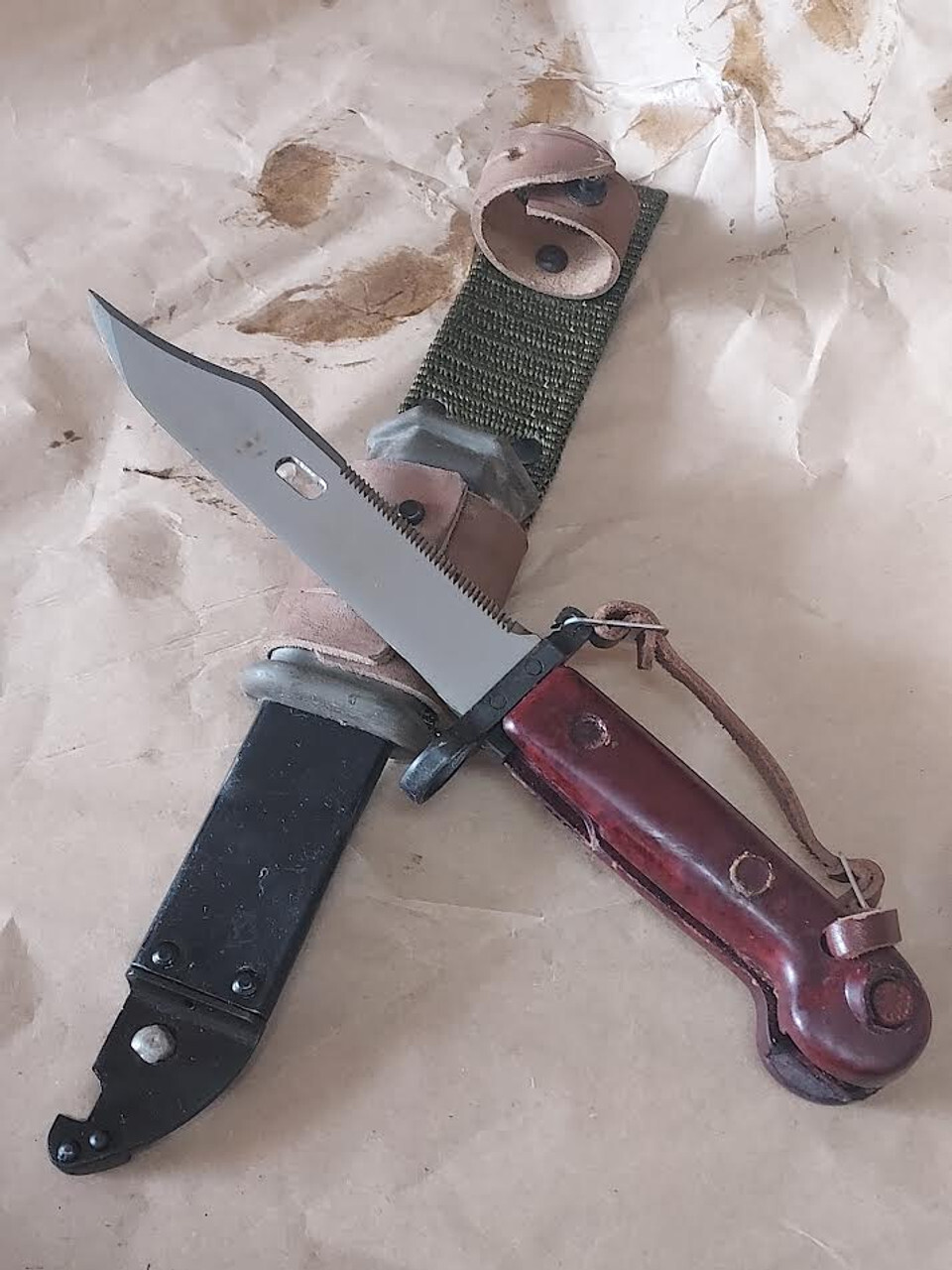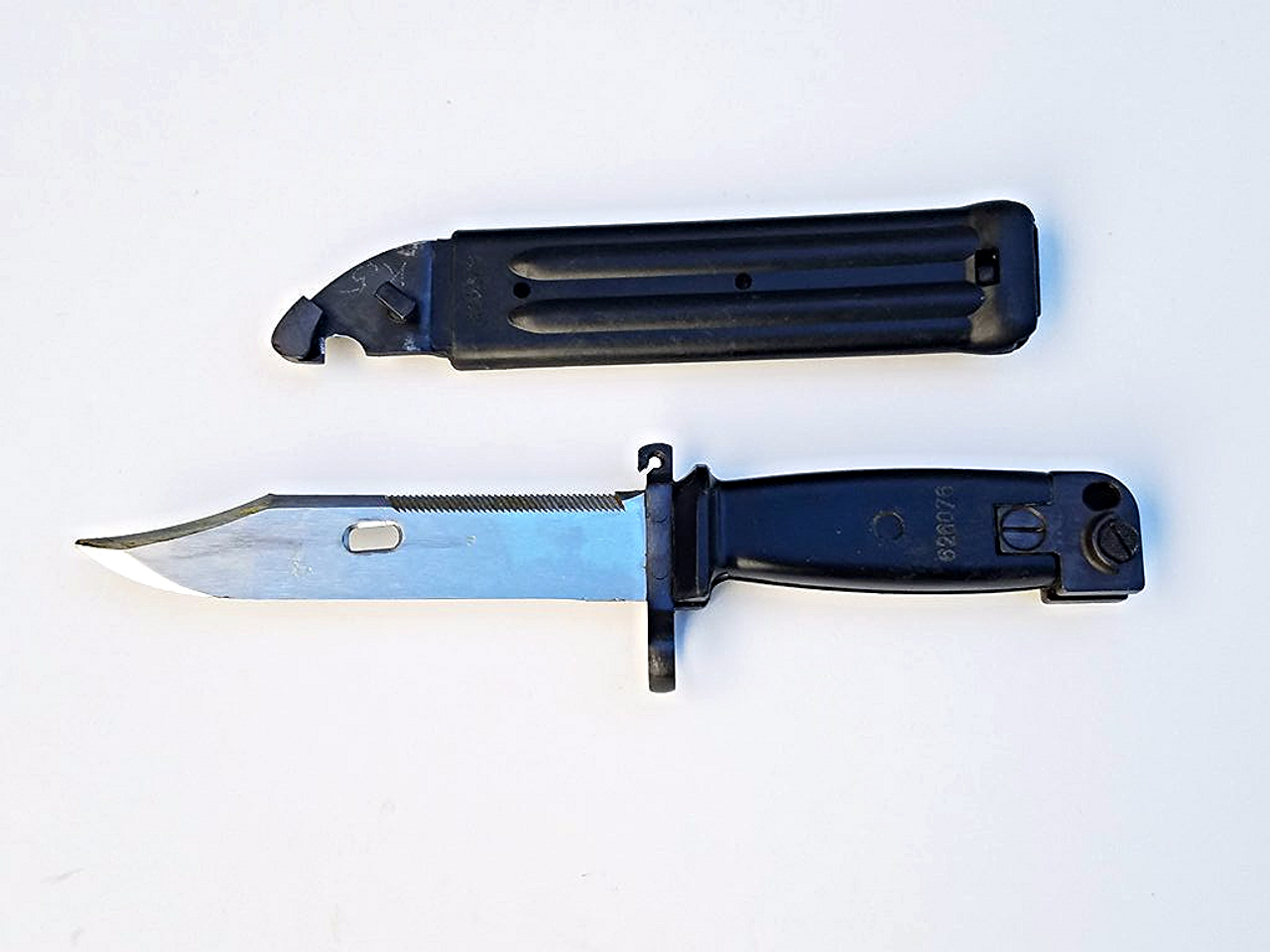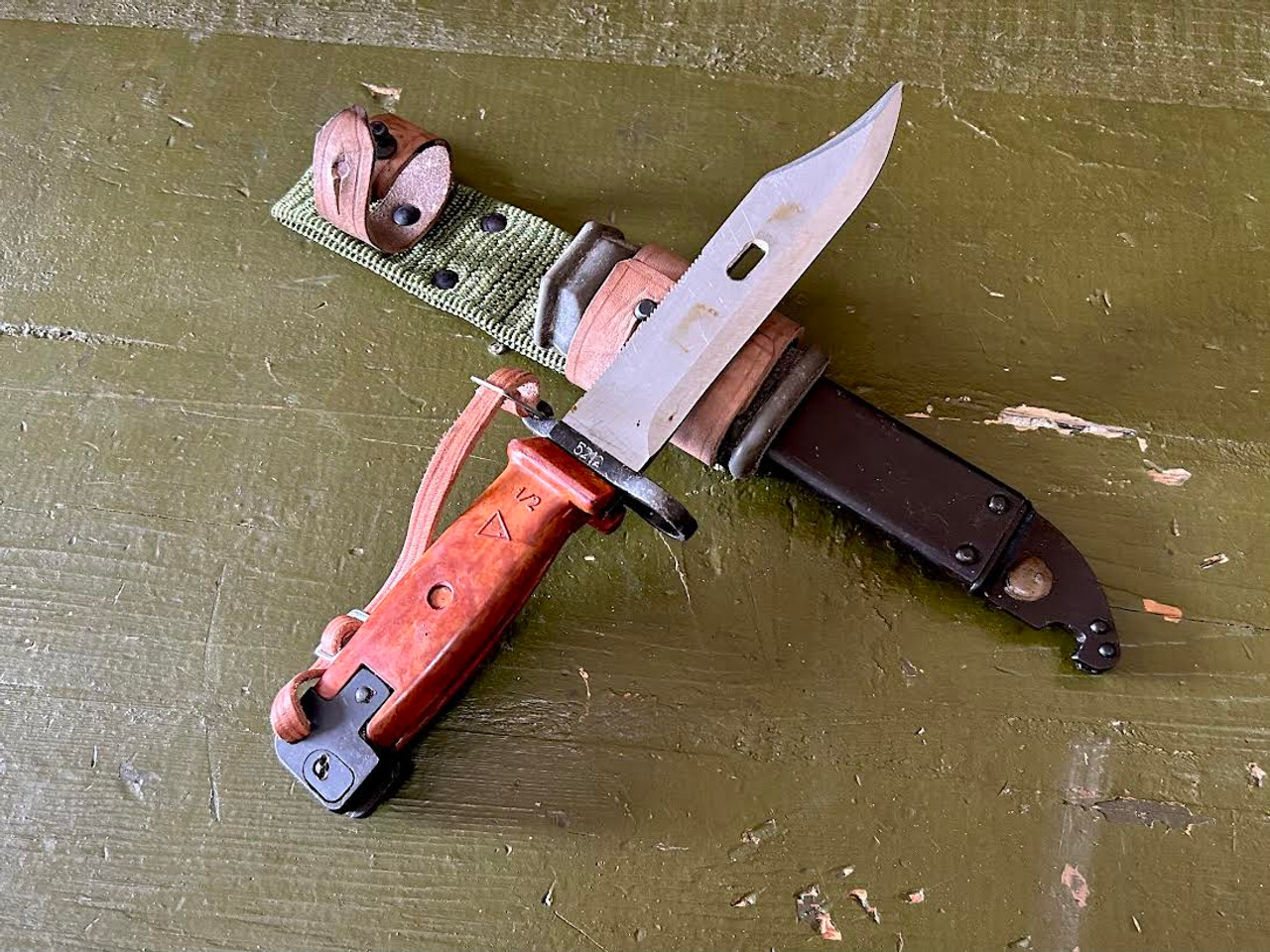Authentic AK Bayonets for Sale: A Deep Dive into Romanian and Yugoslav History
Posted by Peter Naroni - WW2 and Cold War Historian on Jun 12th 2025
In the world of surplus militaria, few objects capture the gritty realism of Cold War-era warfare like the bayonets that accompanied AK-pattern rifles across Eastern Europe and the Balkans. These blades, once standard issue for troops defending Warsaw Pact borders or patrolling Yugoslavian terrain, now surface in the hands of collectors and rifle enthusiasts seeking both history and authenticity. Among the most storied examples are the Romanian AIMS-74 bayonets, AKM-pattern blades, and the distinctive Yugoslavian M70 bayonets. Not just museum pieces, these tools were forged to survive decades of conflict and field use. Whether recovered from Balkan arms depots or Romanian military storage, each unit tells a silent story of tactical doctrine, soldiering tradition, and practical battlefield efficiency — stories preserved in official reports, soldier memoirs, and firsthand deployment records.
Romanian AIMS‑74 Bayonet
The Romanian AIMS‑74 bayonet, also known as the AKM Type II Transitional bayonet, emerged in the mid-1980s as Romania made the switch to the 5.45×39 mm cartridge with its AK-74 variant. This bayonet combined the Type I scabbard with the newer Type II blade, resulting in a hybrid that’s both rare and distinctive.
Manufactured in small numbers at the Cugir arsenal (Romtechnik/RATMIL), the AIMS‑74 was produced alongside the updated rifles but never saw wide service, making it especially scarce today. Key identifiers include a triangular-arrow factory mark (with outlined fletching), grip/scabbard serial matches, and its transitional form. Collectors prize them: one forum member described finding "a battlefield pickup" version—removed from service gear during conflict—highlighting its contested origin.
Design & Battlefield Use
-
The blade length is approximately 270 mm, with a cross-section optimized for both cutting and thrusting.
-
The scabbard—Type I with a rubber-insulated tip—was built for wire‑cutting tasks and belt attachment.
-
Used by Romanian mountain troops and special forces in Kosovo, Afghanistan, and Iraq during peacekeeping missions, the AIMS‑74 combined ruggedness with utility.
Although difficult to find, existing examples show:
-
Durability: heat-treated steel that held edge well in field conditions.
-
Versatility: competent in drills from bayonet training to fieldwork.
-
Collector appeal: its transitional nature bridges two eras and represents a unique branch of AK evolution.
Today’s buyers—especially those seeking battlefield provenance—often pay premiums for serial-matched sets with intact scabbard frogs and military edge wear. As an e-commerce product, listing bullet points like “Type I scabbard with wire-cutting capability”, “Triangular-arrow factory mark”, and “Limited transitional production” helps with ranking for military surplus and collector buyers.
Romanian AKM Bayonet

Romanian AKM bayonets are AK-47/AKM-style blades made domestically in Romania, modeled after the Soviet 6X3 design. They came in two main types: Type I (plastic grip, wire-cut scabbard) and Type II ("true" AKM style with plastic scabbard).
Type I Features
-
Grip: reddish-brown plastic.
-
Scabbard: black steel with tan/gray rubber insulator and leather/nylon frog.
-
Used concurrently with AK-63 rifles built in the 1960s/1970s and later the AKM.
Type II Features
Following Soviet advancements, Romania developed a fully plastic scabbard AKM model. These are less common but functionally similar to Soviet originals. The grip and scabbard markings usually match the rifle serial—valuable for collectors.
Battlefield Effectiveness
Romanian AKM bayonets were standard issue during Cold War-era patrols and Eastern Bloc defense duties. Key battlefield utility included:
-
Wire cutting: insulated scabbard capable of electrical neutrality.
-
Hand‑to‑hand combat: spear-point blade design.
-
Field utility: chores like chopping limbs, opening crates, small-scale digging.
Collectible interest continues strong due to their robust build and the uniqueness of Romanian serial/marking patterns.
Yugoslavian M70 Bayonet

The Yugoslavian M70 bayonet, designed for the Zastava M70 (Yugo AK-47 clone), firmly follows the Soviet Type II pattern but with distinct local refinements.
Design Characteristics
-
Grip: black plastic, wider than Soviet models.
-
Scabbard: glossy black plastic with green-gray web hanger and brass snap.
-
Often features electropenciled serial numbers or R-prefix for repaired units.
Field Usage and Production
Zastava began M70 production in 1970 under Yugoslav defense authority, supplying national forces, militias, and exported arms. Bayonets were part of standard kit, used in:
-
Bosnian War (1992–1995): INFs carried them in trench combat; evidence surfaces in photos and war relic databases. A true bounty for the serious collector is a Bosnian war surplus bayonet.
-
Iraqi conflict: surplus M70 kits appeared in Middle Eastern arsenals, documenting their export reach and battlefield wear.
Collector and E-Commerce Value Today
Crate-stored surplus (e.g., 5-packs listed by Atlantic Firearms) fetch moderate interest for their condition and compatibility. Buyers look at:
-
Matching serials on grip/scabbard.
-
Condition grade (Very Good to Excellent).
-
Original cosmoline preservation.
Furthermore, while originally designed for infantry use in rugged terrain, the Yugoslavian M70 bayonet has found new relevance in modern civilian circles, particularly among AK enthusiasts, survivalists, and preppers. Its robust construction — including the thicker pommel, solid bakelite grip, and wire-cutting scabbard assembly — make it more than just a collectible. Some users adapt M70 bayonets for fieldcraft, using them as multipurpose tools during hunting trips or as components in go-bags. The scabbard's integrated wire cutter is still fully functional and appreciated in off-grid situations where utility matters more than aesthetics. Additionally, reenactors and historical trainers favor the M70 variant for its period-correct compatibility with Zastava M70 rifles still in civilian circulation. Unlike more fragile surplus pieces, the Yugo bayonets can still take abuse — a testament to the doctrine of overbuilt Yugoslavian military engineering.
Compatibility and Fitment Across Platforms
While each of these bayonets was built with a specific rifle family in mind, the interchangeability of AK bayonets has long been a selling point. Romanian AKM and AIMS-74 bayonets, for example, will mount securely to most AKM-style rifles with standard bayonet lugs and compatible front sight block configurations. The Yugoslavian M70 series, however, features unique attachment geometries that pair with the M70’s thicker barrel and reinforced gas block. Collectors and builders should note these distinctions before making fitment assumptions. Additionally, Romanian AIMS-74 bayonets have been found to fit some SAR-2 and WASR rifles, though not always with guaranteed perfect lock-up.
Cold War Trade, Aid, and Bayonet Proliferation
These bayonets were not only used domestically but were also part of the broader Cold War-era arms aid packages. Romania exported thousands of AKM-style rifles and their matching bayonets to African and Middle Eastern client states in the 1970s and 80s, while Yugoslavia’s non-aligned status allowed it to provide military support to both Western and Eastern allies, including export variants of the M70 and its accessories. As a result, Romanian and Yugoslavian bayonets have been found on battlefields far from their country of origin — from Angola to Lebanon — further enhancing their mystique and historical value. These exports also contributed to evolving bayonet design in recipient states, with several nations reverse-engineering or adapting the Romanian AKM model for local production.
If you've decided you're ready to become a bayonet collector, then check out the fine assortment we offer at AK Options!
Sources:


